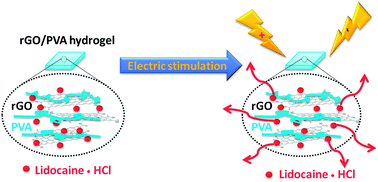Characterization and drug release behavior of highly responsive chip-like electrically modulated reduced graphene oxide–poly(vinyl alcohol) membranes†
Abstract
Hybrid hydrogel membranes composed of reduced graphene oxide (rGO)

* Corresponding authors
a
Department of Materials Sciences and Engineering, National Chiao Tung University, No. 1001 Ta Hsueh Rd., Hsinchu, Taiwan 300, R.O.C
E-mail:
sanyuanchen@mail.nctu.edu.tw
Fax: +88 63-5724727
Tel: +88 63-5731818
Hybrid hydrogel membranes composed of reduced graphene oxide (rGO)

 Please wait while we load your content...
Something went wrong. Try again?
Please wait while we load your content...
Something went wrong. Try again?
H. Liu, S. Hu, Y. Chen and S. Chen, J. Mater. Chem., 2012, 22, 17311 DOI: 10.1039/C2JM32772D
To request permission to reproduce material from this article, please go to the Copyright Clearance Center request page.
If you are an author contributing to an RSC publication, you do not need to request permission provided correct acknowledgement is given.
If you are the author of this article, you do not need to request permission to reproduce figures and diagrams provided correct acknowledgement is given. If you want to reproduce the whole article in a third-party publication (excluding your thesis/dissertation for which permission is not required) please go to the Copyright Clearance Center request page.
Read more about how to correctly acknowledge RSC content.
 Fetching data from CrossRef.
Fetching data from CrossRef.
This may take some time to load.
Loading related content
